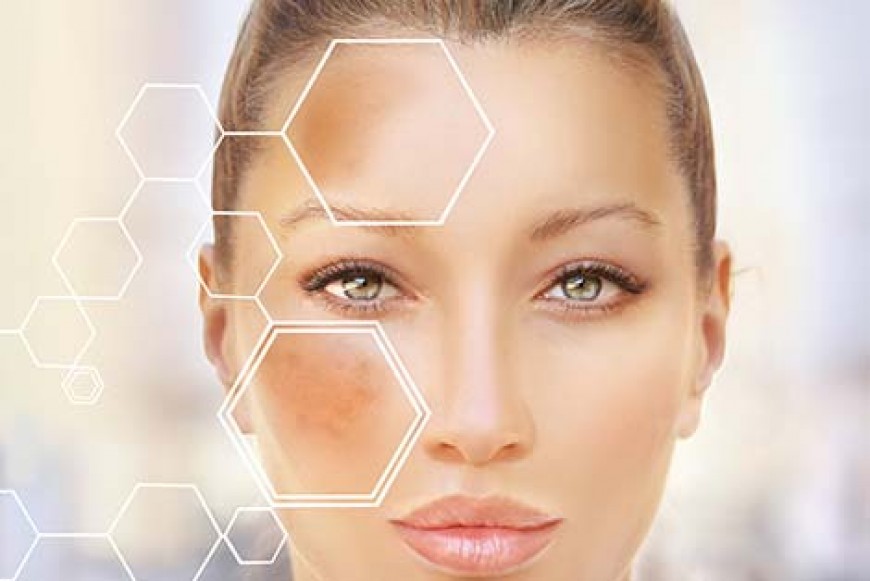What is hyperpigmentation?
Hyperpigmentation is a common skin condition that causes the skin to darken. This occurs when the skin produces a brown pigment called melanin, the pigment that gives skin its color. Hyperpigmentation can occur in small patches, cover large areas that appear darker than the natural surrounding skin. Some forms of hyperpigmentation, including melasma and sun spots, are more likely to affect areas of skin that face sun exposure, including the face, arms, and legs.
Causes of hyperpigmentation
The most common causes of hyperpigmentation are:
• Post-inflammatory hyperpigmentation
Post-inflammatory hyperpigmentation is caused by trauma. Most common causes includes acne, friction, shaving, abrasion, dermatitis, burns, eczema & allergic reactions.
• Sun exposure/ age spots / sun spots
The body produces more melanin to protect the skin from prolonged exposure to the sun which cause dark spots or patches on the skin called sun spots or age spots. Most common causes of sun spots include UV damage / sun exposure, exposure to pollutants, and smoking.
• Melasma
Darker patches of skin can form when people experience hormonal imbalance. This type of hyperpigmentation is common during pregnancy. Most common causes of melasma include pregnancy, thyroid disorders, hormonal birth control, & other endocrine conditions.
• Freckles and moles
When you’ve developed a fan of freckles or have lots of moles, excess melanin is the cause. Most common causes of freckles and moles include sun exposure & genetics.
Cosmetic procedures to get rid of hyperpigmentation
• Laser therapy
A laser therapy produces a wavelength of high energy light, which is then converted into heat energy which reduces hyperpigmentation. There are 2 types of lasers- ablative and non-ablative. Ablative lasers are the most intense, and they involve removing layers of your skin. Non-ablative procedures, on the other hand, target the dermis to promote collagen growth and tightening effects.
• Intense Pulsed Light(IPL)
IPL therapy is also known as a photofacial. It stimulates collagen growth within the dermis. It usually requires multiple sessions. IPL is used for overall pigmentation issues, but flat spots especially respond to this treatment. It may also help reduce the appearance of wrinkles, spider veins, and enlarged pores.
• Chemical peels
A chemical peel uses acids at stronger concentrations to treat the desired area of skin. It reduces the appearance of hyperpigmentation by removing the epidermis. Deeper versions may also penetrate the middle layer of your skin (dermis) to produce more dramatic results.
• Microdermabrasion
Microdermabrasion is used to treat hyperpigmentation that affects the epidermis only. It includes exfoliation to remove the external layers of dead skin. The goal is to reveal the healthier, younger skin underneath. The process encourages your skin to produce collagen & elastin.
People who are considering undergoing one of these procedures should opt for a good dermatologist who can help you identify the cause of your hyperpigmentation and work with you to develop an appropriate treatment plan.
To know more about hyperpigmentation & suitable procedure for you, contact Kutiz Skin Clinic.

